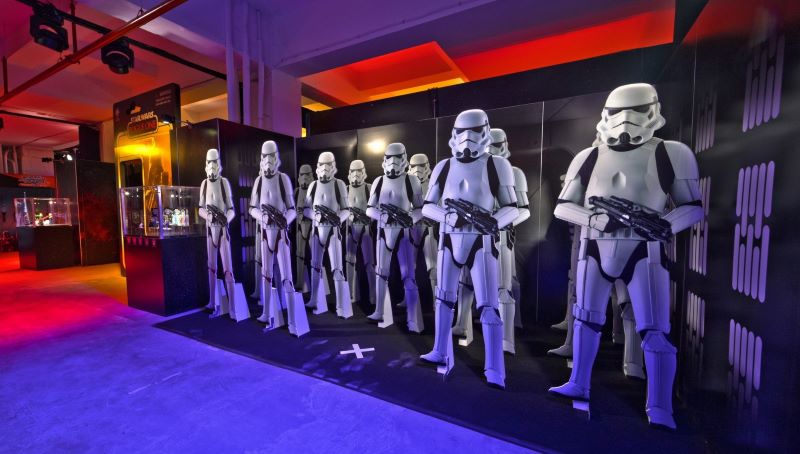
The “Star Wars” franchise has mounted a marketing initiative that projects lighted images on a famous New York City building, attracting the attention of street traffic and, more importantly, the press.
“Star Wars” imagery gets beamed on the side of the 102-floor Empire State Building at night. This supports licensed movie merchandise and runs of “Star Wars” saga movies on video streamer Disney+.

Such marketing initiatives are called projection media, street projection and projection advertising; images can be stills or moving video.
At the iconic Empire State Building, there’s more on the inside. Disney Consumer Products and Lucasfilm unveiled a “villains-inspired takeover for fans in New York City that features a dynamic light show, immersive experiences for visitors, character appearances, and participation from [“Star Wars”] actor Hayden Christensen in a morning lighting ceremony,” says a Disney press release.
“Fans who visit the Empire State Building,” the Disney press release continues, “will have the opportunity to immerse themselves into the ‘Star Wars’ galaxy photo opportunities which feature a range of new ‘Star Wars’ consumer products through April 29.”
This straddles the line between publicity (since it generates press attention) and promotion as a marketing ploy mounted with assistance of a third party — the Empire State Building.
The “Star Wars” initiative also involves Hasbro, the toy company and movie products marketer. Another strand is a theatrical rerelease of all nine “Star Wars” films in the Skywalker Saga: The May the 4th Marathon, but only in 12 cinema locations.
At a Marcus theater in Wisconsin, tickets are “$45 and include the themed breakfast buffet,” says a press release of the cinema circuit. “Attendees will also receive a collectible poster and enjoy 20% off all concessions during the marathon.” Attendees are encouraged to come wearing costumes.

As for the Empire State Building initiative, such image projection promotions take marketing to the streets by delivering messages to an out of home (OOH) audience. The Empire State Building initiative is done cooperatively with the building owner, but sometimes such tactics are executed without permission as guerrilla marketing. For instance, singer Beyoncé went guerrilla this month to promote her new record album.
“The Guggenheim, the Whitney, the New Museum, and the Museum of Arts and Design all had imagery from the Grammy winner’s upcoming album ‘Cowboy Carter’ beamed onto their buildings Wednesday evening,” reports a New York Post story by Alyssa Guzman. “Across the outside of the Guggenheim, the facade was lit up with words ‘This ain’t a country album. This is a “Beyoncé album.’”

No permissions were reportedly secured by Beyoncé; since image projection can be executed from afar, there is no trespass or obvious breach of law. Guerrilla marketing are initiatives done cheaply, locally, often on the fly and sometimes without authorizations from third parties whose property is involved in some way.
Regarding generating press attention, in 2021, the Disney+ video streaming service arranged to project the iconic shield from the theatrical “The Falcon and the Winter Soldier” on the famous London Eye. It’s the giant 443-foot (135 meter) revolving Ferris observation wheel in Central London and the initiative got worldwide press coverage.
More recently in November, Disney arranged to have new theatrical “The Marvels” do a takeover over the large Las Vegas Sphere concert hall, whose projected external imagery has a three-dimensional flavor, not just flat.
As for the OOH media segment, “This sector, which traditionally once meant just static outdoor billboards, is exploding with diversity and now encompasses TV screens at check-out counters, street furniture (bus benches, for example), and huge building/wall spectaculars,” says the third edition of academic/business book “Marketing to Moviegoers.”
Related content:
Leave a Reply